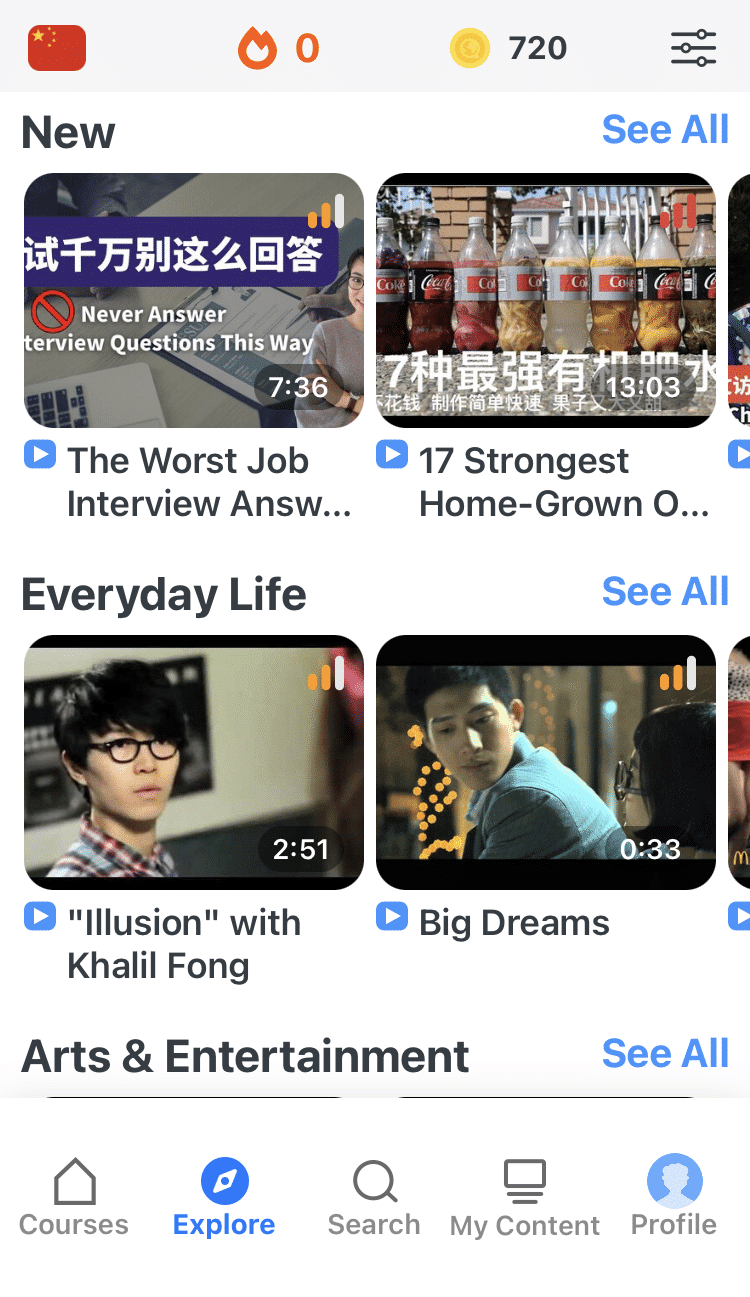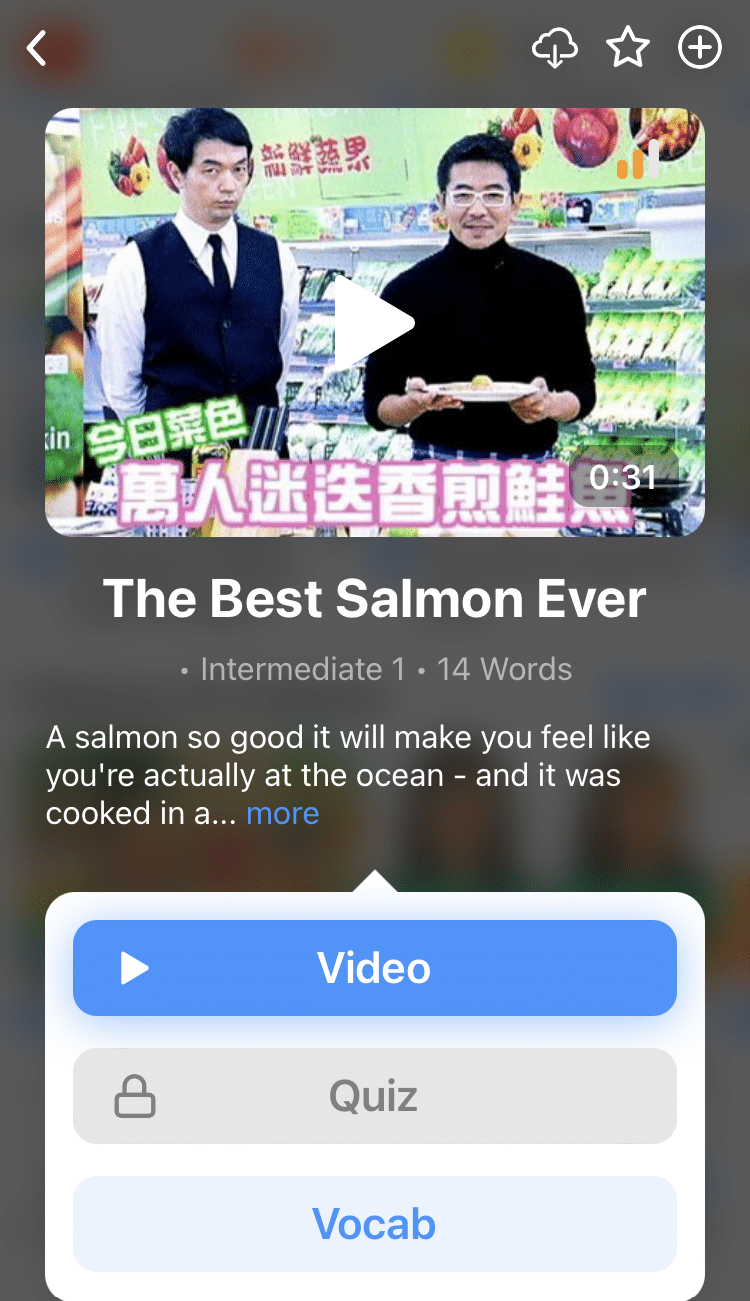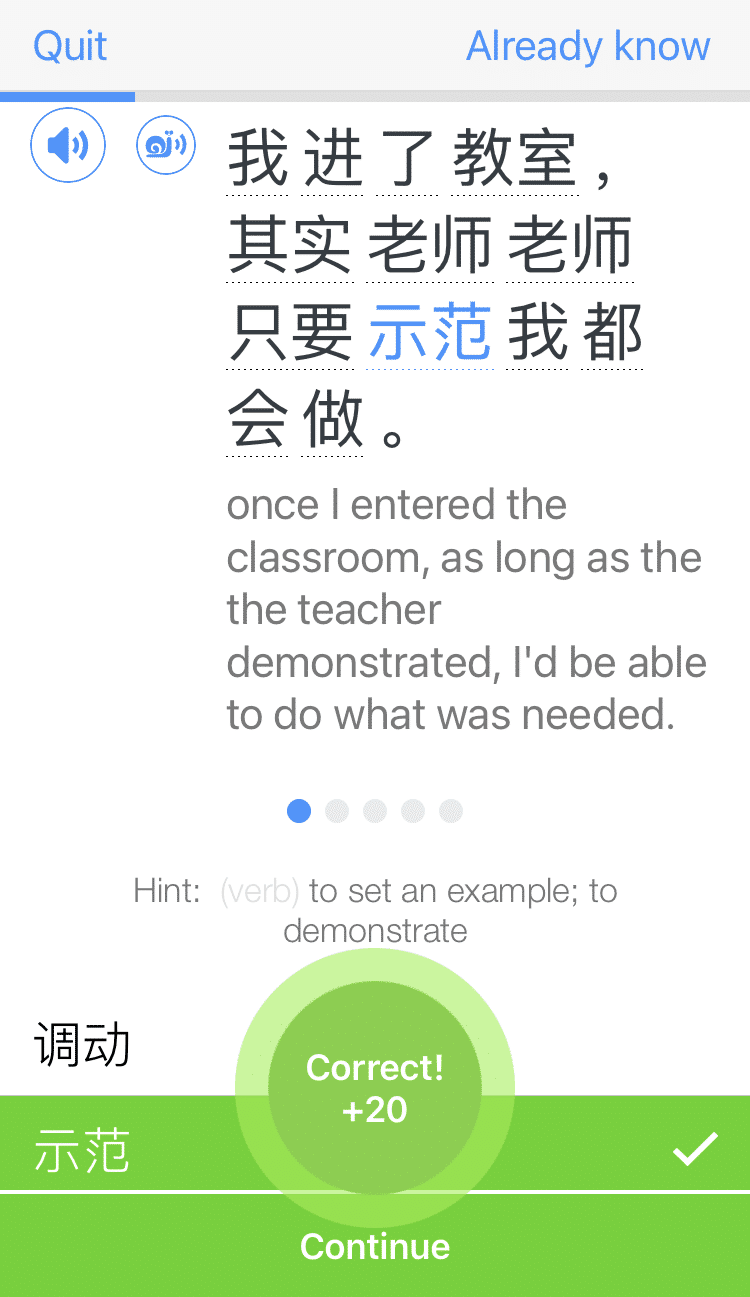
Comprehensible Input: Chinese Learning Made Easier in 7 Simple Steps
Sometimes conventional wisdom is wrong.
We’ve all heard it before: To learn Chinese, jump into the immersion pool. At the deep end.
Though immersion is essential to learning the language, such advice is overly simplistic and not very suitable for most learners.
What you really need is comprehensible input in Chinese.
You need to understand enough to make the learning experience enjoyable and worthwhile.
Keep reading for exactly what comprehensible input is and how to use it to improve your Mandarin Chinese skills without drowning in the deep end.
Contents
- What is Comprehensible Input?
- Supporting Comprehensible Input with Scaffolding
- How to Find and Scaffold Comprehensible Input in Chinese
- And One More Thing...
Download: This blog post is available as a convenient and portable PDF that you can take anywhere. Click here to get a copy. (Download)
What is Comprehensible Input?
The comprehensible input hypothesis for second language acquisition was developed and made famous by linguist and educator Stephen Krashen. It’s got a fancy name, but it really just means that you should understand most of what you hear and read, otherwise you will not benefit much from it.
It makes sense: If we only listen to and read material at our current level of Chinese, we will never understand more difficult content.
Of course, this doesn’t then mean you should just throw yourself into intensive immersion learning. Assuming your native language is not very similar to Chinese (and not many languages are!), intensive immersion learning will probably be more frustrating than helpful.
Consider my case: I’m Swedish. I’m sure that if I, for some reason, teleported myself to Germany and lived a normal life like ordinary Germans, I would learn German fairly quickly. This is because I would be able to understand much of what’s going on around me without actually having learned any German.
Not so with Mandarin Chinese.
If I had no prior knowledge of Mandarin and found myself suddenly living in China, I would likely understand almost nothing of daily conversations and virtually nothing of written texts either.
That’s because your target language input needs to be comprehensible—you should be able to understand most, but not all, of the information you’re reading or hearing.
In a nutshell: Comprehensible input in Chinese needs to be challenging, but not impossible.
Supporting Comprehensible Input with Scaffolding
So, our content for language input should be a bit of a challenge. That means we need support in order to manage the new material, because drowning at the deep end of the pool isn’t what we’re after.
We need scaffolding, something to keep us afloat.
There is, in fact, a much older metaphor for this, popularized by Soviet psychologist Lev Vygotsky in the 1930s. Imagine a house as a metaphor for language learning. The teacher’s role is to provide scaffolding so that the building of knowledge can rise ever higher.
A student should be able to cope with a level slightly higher than their current level as long as the teacher provides enough support.
Once the student has grown used to material at this new level, the scaffolding can be removed and the building is now one story higher. Scaffolding is then used to start building the next level, and so on.
If you have a private teacher, they will probably provide you with this support.
But what about all my self-learners out there? Is using comprehensible Chinese input out of the question?
Definitely not. You can actually provide your own scaffolding, and I can tell you exactly how to do so.
How to Find and Scaffold Comprehensible Input in Chinese
1. Use content at the right level
This is the most important step and also likely the most difficult step. If your content is too easy, you won’t learn anything new. If it’s too hard, you also won’t learn anything new. It takes a lot of work to find content that’s just right for you.
I recommend using tailored or categorized content. Are you a totally new Mandarin student? Are you at a lower-intermediate level? Are you almost an advanced learner? Look for material aimed at learners of your specific level.
The obvious first place to look is textbooks, but not necessarily the one you’re currently using. Find other textbooks aimed at the same level. This will provide you with more input without significantly increasing the difficulty. If these books come with audio, then you also have access to more listening material too.
For other reading materials, try some graded readers. These are books designed for Chinese learners at a certain level. Graded readers are typically more interesting than textbooks, so I really recommend trying them if you haven’t.
There are also learner-oriented stories and texts online—like Chinese-language blogs—but it might be harder to find ones suitable to your current level.
For audio sources, you can look for Chinese podcasts that target your specific level, as well as YouTube channels.
There are also plenty of language learning resources out there that offer content tailored to specific levels. FluentU, for instance, offers video-based Chinese lessons at every language level with a variety of language learning tools.
FluentU has a wide array of videos, categorized by difficulty and topic. The program even provides a progress bar under each video option to show you how much of the content you likely already know.
2. Choose familiar topics
The choice of topic matters greatly for understanding what you’re listening to or reading, especially when you approach native material.
For example, if you know nothing about technology, then watching a commercial about a new mobile phone is going to be very hard. Not only do you lack the vocabulary in Mandarin, you might not even know what the words mean in English!
If you do the opposite, however, you can find material on subjects that are familiar to you and make your learning experience much easier—and more enjoyable.
For instance, reading about your own country in a Chinese encyclopedia is much easier than reading about a country you don’t know anything about. You sort of already know what they’re going to say, so you just need to figure out how they say it.
3. Find material you already know
Another thing you can do which is particularly useful for text and video learning: Learn Chinese with something you have already read or watched in your native language.
The ensures two things. First, you know that you like it and are interested in it. Second, you know what it’s about even before you start. Perhaps you know it very well!
So, for example, watching dubbed Western films or cartoons is an excellent comprehensible input choice. So is reading your favorite novels in their Chinese translations if you’re near that level.
You can also create this situation on the spot in some cases by reading about a news event in your native language before tackling the same article in Chinese.
If you need some dual-language material inspiration, BBC has many Chinese articles. There are also books that come with Chinese on one page and English on the other.
4. Focus on a specific subject (at first)
One reason it’s hard to listen to or read Chinese in an unfamiliar area is because you aren’t used to the way Chinese is used in that context, and there will be many words you simply don’t know.
Typically, textbooks jump around between different topics, which helps you expand your Mandarin vocabulary and learn new Chinese grammar, but it also makes improving your overall comprehension a much slower process.
If you keep to a single topic, you will gradually learn to handle it.
There are plenty of ways to do this: Read ten articles about the same event in different newspapers. Read several comics belonging to the same series. Read the list of contents of ten different beverages.
Then, when you feel comfortable, expand to neighboring areas to build out your knowledge in a more systematic (and noticeable) way.
5. Reference additional media and learning tools
Finding the right content to use for comprehensible input in Chinese is incredibly important. Once you have it, though, you’ll need to make sure you have the right kind of scaffolding to ensure you understand that content.
Anything that makes it easier to understand Chinese but which isn’t language will be helpful. This can include pictures in articles, the drawings in comic books or the visual parts of a film.
A clear example is Mandarin news broadcasts, which are typically much, much easier if you watch them on TV where you are fed pictures that give you clues as to what’s going on.
Compare this with blandly reading an article about the same thing, and you can understand why multimedia is so helpful for language learners.
You’ll also want to have a reputable Chinese dictionary on hand. This can dramatically reduce the difficulty of reading texts. If you’re reading on a computer, phone or tablet, you may be able to use a pop-up dictionary, which will help a lot if there are more words you don’t know than you expected there to be.
If all else fails, a good Chinese translation app can pick up the slack. Perhaps you don’t know how to look up a certain word, or you want an overview of the text before you dive in. While Chinese-English automatic translations aren’t perfect, they should be good enough to make the text more approachable.
6. Preview the content to get the gist first
Previewing your content will give you some baseline familiarity with it, which will make actually trying to learn with it easier. Previewing can be regarded as a sort of warm-up.
This is easiest with audio, where you can simply have it going in the background while you listen semi-attentively to it before you actually try hard to understand what’s being said.
Previewing can be done for text as well, but it requires more effort. For instance, reading headlines or keywords before you start reading an article will give you clues as to what it’s about. You can also scan for any unknown words that come up repeatedly and look up their definition before you start reading.
You can also prepare in this way for social situations! For instance, you can ask different people the same question. You should have some idea what their answer will entail, though of course you can’t guess exactly how everyone will respond.
You can do this with questions that have only one answer, such as, “How do I get to the train station?” You can do this with open-ended questions as well, as in, “What’s your favorite movie?”
If you do this with many people, you will find it easier and easier to understand what they say.
7. Review the material later
Reviewing is an excellent way to ensure that your comprehensible input Chinese study is working for you.
However, it does have the drawback that listening to or reading things you’ve already consumed tends to be a bit boring. Thus, I suggest reviewing old material when you feel too tired to deal with new material.
Of course, for this to work, you need to hold on to any material you’ve studied with, so don’t delete things just because you’re finished with them for the moment.
I typically relisten to lots of audio I’ve studied previously. Since I’ve already studied it, I’m more or less guaranteed to understand what’s going on, and I also get to refresh the relevant language content.
Personally, I find reviewing audio to be more effective and less monotonous than reviewing text. While it can be done, I typically find it too boring to be meaningful unless it’s a text I haven’t read for a very long time.
Reviewing your past learning materials also has the wonderful bonus of showing you just how far you’ve come.
Sometimes it can be difficult to see your Mandarin skills progressing. Going back and seeing how much easier your old content feels now often provides a great confidence and motivation boost.
While the road to understanding native Chinese can be long, it needn’t be difficult—so long as you use the right methods and materials.
Instead of lamenting the lack of suitable material for whatever level you’re at, scaffold your own comprehensible input in Chinese!
Download: This blog post is available as a convenient and portable PDF that you can take anywhere. Click here to get a copy. (Download)
And One More Thing...
If you want to continue learning Chinese with interactive and authentic Chinese content, then you'll love FluentU.
FluentU naturally eases you into learning Chinese language. Native Chinese content comes within reach, and you'll learn Chinese as it's spoken in real life.
FluentU has a wide range of contemporary videos—like dramas, TV shows, commercials and music videos.
FluentU brings these native Chinese videos within reach via interactive captions. You can tap on any word to instantly look it up. All words have carefully written definitions and examples that will help you understand how a word is used. Tap to add words you'd like to review to a vocab list.
FluentU's Learn Mode turns every video into a language learning lesson. You can always swipe left or right to see more examples for the word you're learning.
The best part is that FluentU always keeps track of your vocabulary. It customizes quizzes to focus on areas that need attention and reminds you when it’s time to review what you’ve learned. You have a 100% personalized experience.
Start using the FluentU website on your computer or tablet or, better yet, download the FluentU app from the iTunes or Google Play store. Click here to take advantage of our current sale! (Expires at the end of this month.)





